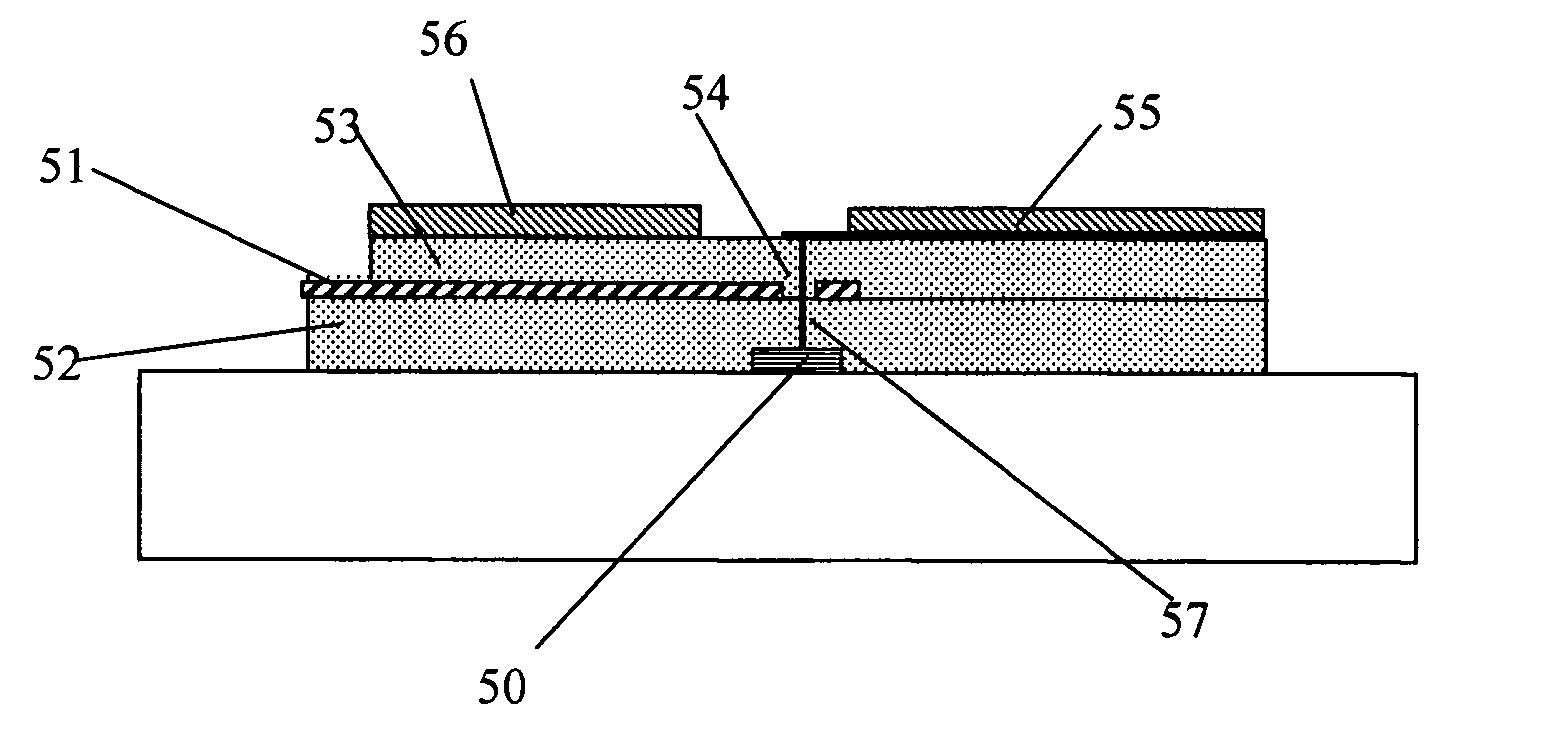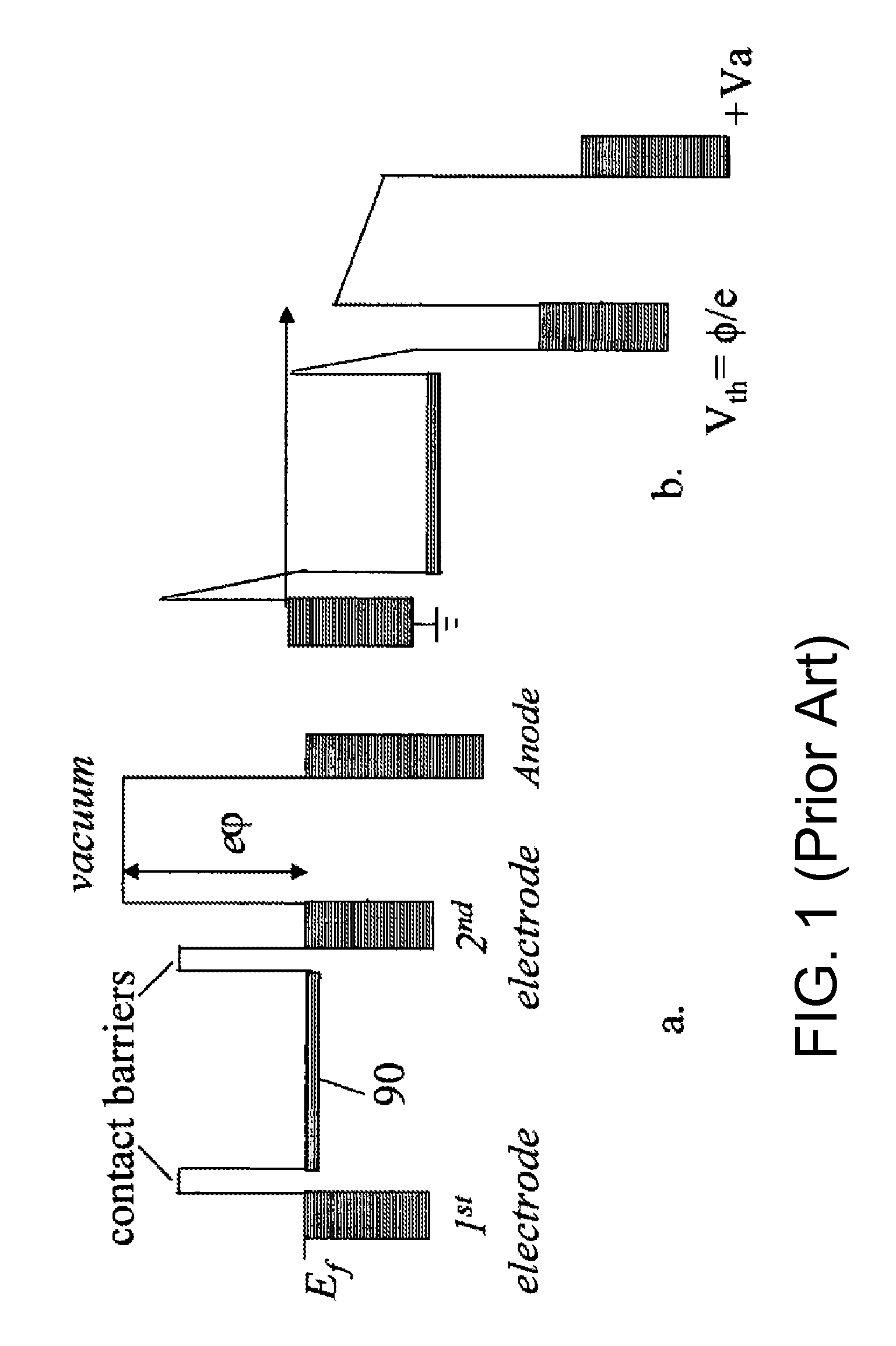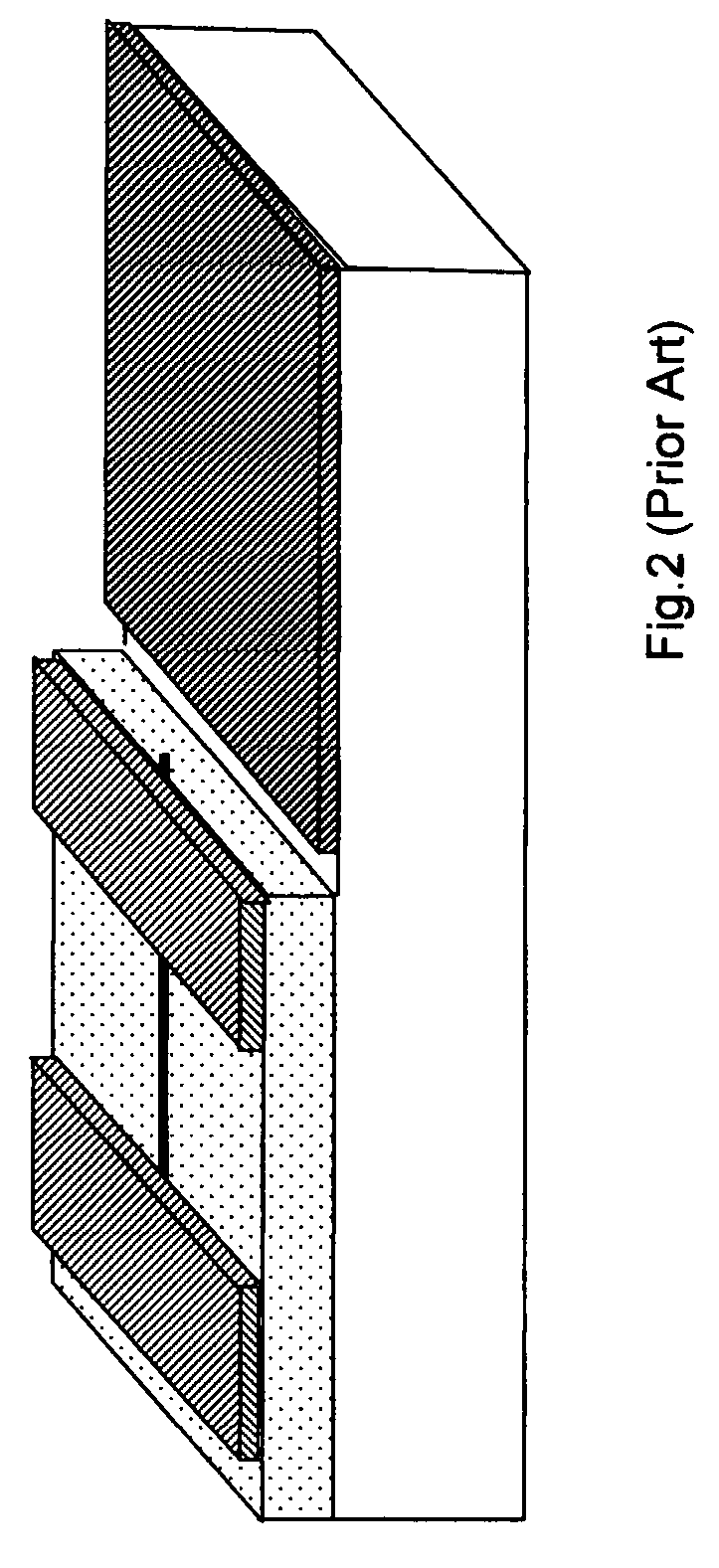Nanotube array electronic devices
a technology of electronic devices and nanotubes, applied in the direction of semiconductor devices, electrical devices, nanotechnology, etc., can solve the problems of impracticality in device manufacturing, and achieve the effects of facilitating nanotube growth, maximum energy separation, and strongest quantum size
- Summary
- Abstract
- Description
- Claims
- Application Information
AI Technical Summary
Benefits of technology
Problems solved by technology
Method used
Image
Examples
Embodiment Construction
1. The NABTs
[0025]FIG. 3a shows the cross-sectional view of the NABT structure. The device is made on the insulating substrate (glass) 31 using planar layer deposition technology. The first metal layer 32 is deposited in the shape of a stripe (normally to the drawing plane) and serves as a cathode electrode, on which the nanotube array will be grown. Before the nanotube growth, small pads of catalytic material (not shown), such as Ni, Fe or Co, are deposited on the metal layer 32 to activate the process of growth. After the nanotube growth, an insulator film 36, such as SiO2 or SiOx, having the thickness smaller than the nanotube height, is deposited. It is followed by polishing of the top surface to cut off the nanotubes ends and thus to both expose the nanotube tips and provide a flat platform for further processing. The grown nanotubes are shown in FIG. 3b as a linear array 33 normal to the substrate plane.
[0026]The next processing step is unique, since it relates to formation of...
PUM
 Login to View More
Login to View More Abstract
Description
Claims
Application Information
 Login to View More
Login to View More - R&D
- Intellectual Property
- Life Sciences
- Materials
- Tech Scout
- Unparalleled Data Quality
- Higher Quality Content
- 60% Fewer Hallucinations
Browse by: Latest US Patents, China's latest patents, Technical Efficacy Thesaurus, Application Domain, Technology Topic, Popular Technical Reports.
© 2025 PatSnap. All rights reserved.Legal|Privacy policy|Modern Slavery Act Transparency Statement|Sitemap|About US| Contact US: help@patsnap.com



